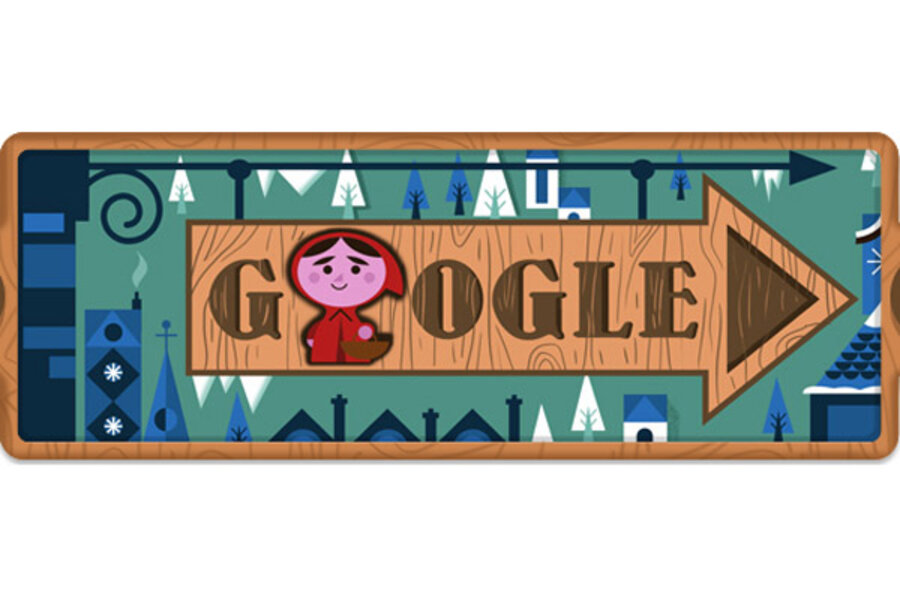The real Brothers Grimm were stranger than fiction
Loading...
Head over to Google's homepage on Thursday and you'll enjoy a scrollable comic strip telling the story of Little Red Riding Hood. The doodle celebrates the 200th anniversary of "Grimm's Fairy Tales," a compendium of European folk tales first published in 1812 by German brothers Jacob Ludwig Carl Grimm and Wilhelm Carl Grimm.
You've probably heard of the Brothers Grimm before, but the lives of the two brothers were every bit as interesting (and, in some places, as dark) as the folk tales they canonized.
Today we know Jacob and Wilhelm mainly for the collection of fairy tales bearing their name, but the brothers were also accomplished linguists and historians. Jacob, the older brother, was born in 1785 in Hanau, Germany, to wealthy parents; Wilhelm was born about thirteen months later. The brothers' father, a lawyer, died suddenly when they were still children, and the family suddenly went from enjoying a large house with servants to relying on financial support from extended family.
Because they had no father, Jacob and Wilhelm grew close to each other. They attended the University of Marburg, where their law professor introduced them to philology -- the study of language in historical texts. Because of their family's poverty, Jacob and Wilhelm were excluded from the school's social life -- which drove them to pursue their studies more energetically.
After college, both brothers worked as librarians in the town of Kassel. Neither Grimm earned much at his job, but their jobs gave them enough time to continue studying, and in 1806 they began writing down the folk tales they heard around Kassel. At first, the brothers were more interested in the stories' research value than their entertainment value -- Jacob was especially concerned with how German had evolved from languages of the past, and even went on to develop "Grimm's Law," which describes how consonants changed over time to give rise to modern German.
The Grimms published the first volume of their collected folk tales -- called "Children's and Household Tales" -- in 1812, and a second volume in 1814. Though they continued to write scholarly books and articles on linguistics and medieval studies, their folk tales gained them the most recognition, and they even received honorary doctorates from their alma mater.
By the way, if you've ever read "Grimm's Fairy Tales" and felt they were a little dark for kids, you have German culture during the early 1800s to thank. After the book was published it attracted criticism for its sexual content, so the brothers edited these themes out of subsequent editions. But because the violence of the stories wasn't frowned upon in the same way, it was retained and in some cases even increased.
In 1825 Wilhelm married Henriette Wild, whose family had supplied the Grimm brothers with some of the best stories for their folk tale collection. Jacob never married, but apparently lived happily with the new couple -- one scholar noted that the brothers "both live[d] in the same house, and in such harmony and community that one might almost imagine the children were common property." The brothers moved to Gottingen in 1830, where they established the field of Germanic studies at the University of Gottingen and continued to publish books on mythology and linguistics, while simultaneously editing their collection of folk tales.
The brothers' academic careers were upset in 1837, though, by some political upheaval. When King Ernest Augustus I demanded oaths of allegiance from university professors and other civil servants, Jacob and Wilhelm refused. They were fired from their posts, along with five other professors, and three of the group -- including Jacob -- were deported. He moved back to Kassel and was joined by Wilhelm, but the brothers once again found themselves impoverished, and had to rely on the financial support of friends.
In 1840 their fortunes changed when both Jacob and Wilhelm received job offers from the University of Berlin. There, they continued their research; further polished their folk tale collection, now in its third edition; and also worked on a comprehensive German language dictionary. Jacob retired from the university in 1848 to focus on his studies, and Wilhelm followed in 1852.
The two brothers continued working together for the rest of their lives. When Wilhelm died in 1859, the Grimms' collection of folk tales had reached its 7th edition and had grown to 200 tales-- including "Hansel and Gretel," "Rapunzel," and "Snow White" -- plus 10 "Children's Legends." Jacob, deeply saddened by his brother's death, became more withdrawn until his death in 1863.
The Grimm's collection of folklore had already been popular during their lifetimes, but it went on to become one of the most celebrated works of German literature and the basis for countless books and movies during the next two centuries. On the list of the best-selling authors of all time, some figures place the Grimms in third place -- preceded only by Shakespeare and the Bible.
For more on how technology intersects daily life, follow us on Twitter @venturenaut.






